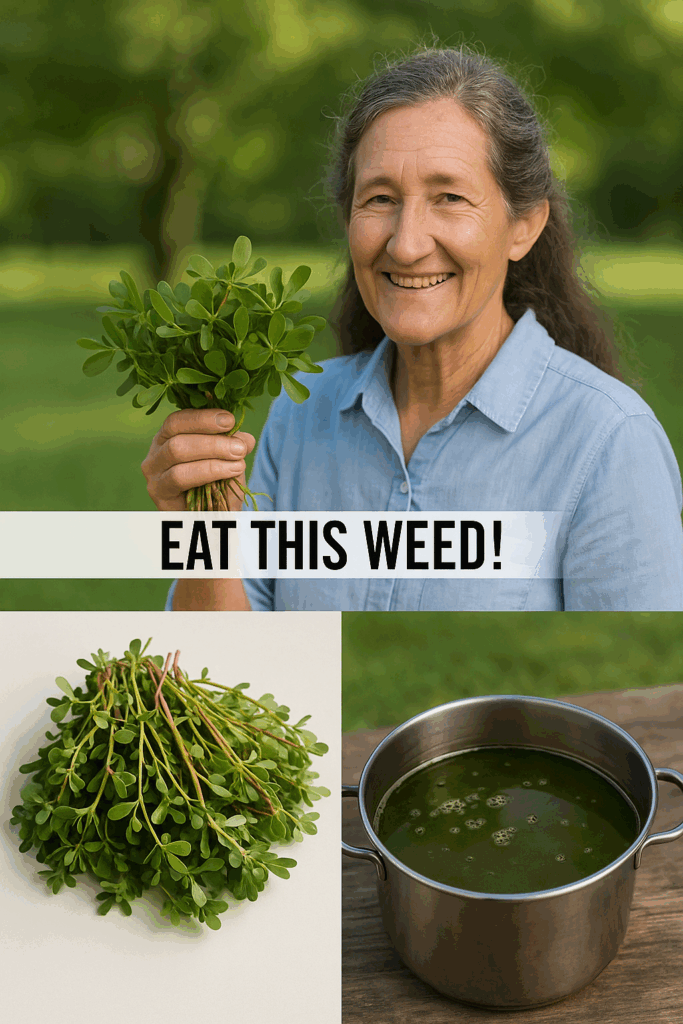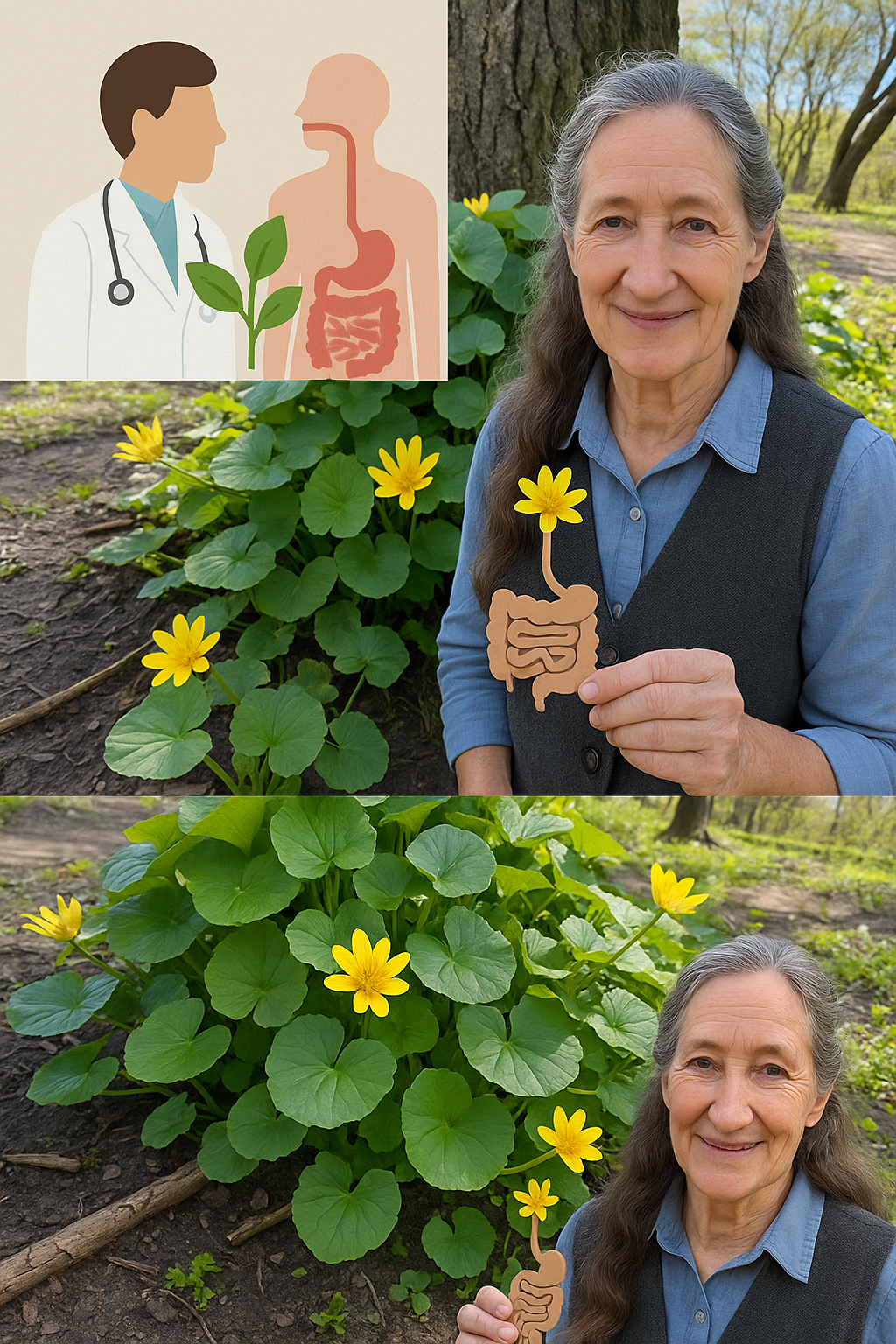🌱 If you’ve been yanking Purslane out of your garden, thinking it’s just another weed, you might be tossing away one of the most nutrient-rich superfoods nature has to offer. This vibrant little succulent, often seen growing from cracks in sidewalks or hiding between rows of crops, has quietly nourished generations and is now making a stunning comeback in both kitchens and clinics.
Revered by figures like Mahatma Gandhi and beloved by chefs across the globe, Purslane (Portulaca oleracea) is not only edible—it’s delicious, healing, and bursting with benefits. And yet, most gardeners pull it out without a second thought.
Here’s why you should welcome it instead—and maybe even plant more.

💚 1. A Nutritional Powerhouse You Didn’t See Coming
Purslane contains a unique blend of vitamins, minerals, and antioxidants rarely found in such abundance in one plant. Its tender, teardrop-shaped leaves are rich in vitamin C, beta-carotene, and vitamin E, all of which support healthy skin, strong immunity, and youthful energy.
But it doesn’t stop there. Purslane provides a surprising amount of calcium, magnesium, potassium, and iron—minerals that many modern diets lack. It’s like your multivitamin… only greener and tastier.
🐟 2. One of the Best Plant Sources of Omega-3 Fatty Acids
Unlike most leafy greens, Purslane is packed with alpha-linolenic acid (ALA), a plant-based omega-3 that plays a vital role in heart health, brain function, and inflammation reduction. In fact, Purslane contains more omega-3s than any other green vegetable ever tested, according to nutrition experts.
This makes it an ideal source for vegans and vegetarians who often struggle to get enough of these essential fats from their diet.
🧠 3. Melatonin for Better Sleep
One of Purslane’s most intriguing features is its natural melatonin content. Yes—the same hormone your brain produces to regulate sleep. Purslane is one of the rare plants that contain this valuable compound, making it an unexpected ally for those battling insomnia or irregular sleep cycles.
Add it to your dinner salad and you might just sleep a little deeper.
💪 4. Natural Cholesterol Control
Inside this crunchy green are betalains, pigments with powerful antioxidant effects. These compounds protect blood vessels from oxidative damage and help lower bad LDL cholesterol levels, while preserving or even raising good HDL levels.
That’s right—this weed may help your heart stay stronger, longer.
🍋 5. A Bright Flavor That Delights the Palate
Don’t let its humble appearance fool you. Purslane delivers a tangy, slightly lemony taste with a peppery finish—perfect for adding zest to your salads, sandwiches, and sautés. It’s this bright flavor that’s earned it a place in upscale restaurants and home kitchens alike.
Chefs from Italy to California are embracing Purslane not only for its nutrition but also for its culinary character. It complements everything from ripe tomatoes and feta cheese to grilled meats and roasted vegetables.
👩🍳 6. Easy to Prepare, Hard to Beat
Want to try it today? Here’s a simple and delicious Purslane & Basil Pesto recipe:
🥄 Ingredients:
- 2 cups of fresh Purslane leaves and stems (washed)
- ½ cup basil leaves
- 1 clove garlic
- ¼ cup toasted almonds
- Juice of half a lemon
- 3–4 tablespoons olive oil
- Salt and pepper to taste

🌀 Instructions:
Blend all ingredients in a food processor until smooth. Slowly drizzle in olive oil while blending until the pesto emulsifies. Adjust seasoning to taste. Use it on pasta, toast, grilled veggies, or as a marinade.
🧬 7. Rich in Antioxidants That Fight Aging
Purslane is packed with glutathione, a master antioxidant that supports detoxification and slows down cellular aging. Combined with vitamin C and E, this plant helps your body neutralize oxidative stress and maintain youthful vitality inside and out.
The result? Fewer wrinkles, more energy, and better protection against everyday environmental damage.
🌸 8. Supports Mental Health and Mood Balance
Surprisingly, Purslane contains tryptophan, the amino acid that helps produce serotonin—your brain’s “feel-good” neurotransmitter. Consuming foods with tryptophan may promote better mood balance and even help relieve symptoms of anxiety and depression.
This makes Purslane more than just a body booster—it could be a mood lifter too.
🌼 How to Grow and Use It in Your Own Garden
Purslane grows almost anywhere—dry soil, full sun, or even poor conditions. In fact, it often grows without your help, which is part of its charm. Once you identify it, start harvesting the tender top shoots and rinse them well. Eat them raw, cooked, pickled, or blended. It’s that easy.
Make sure to harvest from clean, pesticide-free areas, especially if foraging wild Purslane in urban environments.
🌟 A Forgotten Treasure Now Making a Comeback
Centuries ago, Purslane was a staple in many cultures. Early Americans, including Martha Washington, served it at their tables. In parts of the Mediterranean, it’s still a cherished green today. And now, thanks to a growing interest in wild, nutrient-dense foods, this forgotten plant is being reintroduced to gardens, farmers’ markets, and health-focused kitchens.
So next time you see it spreading through your garden, pause before pulling. You might be looking at one of nature’s most overlooked gifts.
🌿 Keep it. Harvest it. Taste it. Let Purslane change the way you think about weeds—and wellness.


